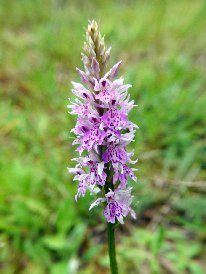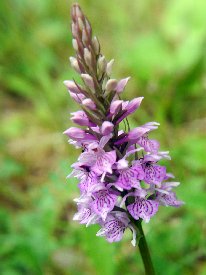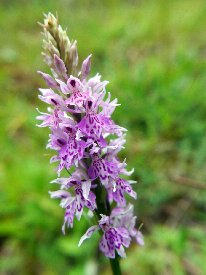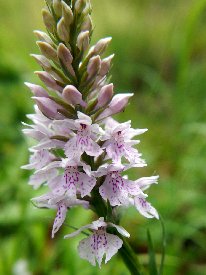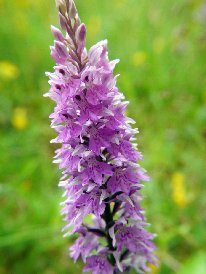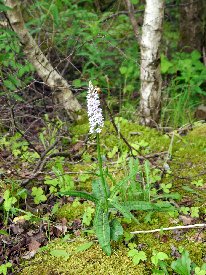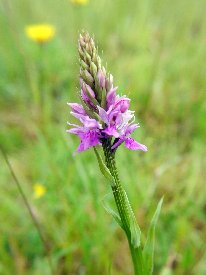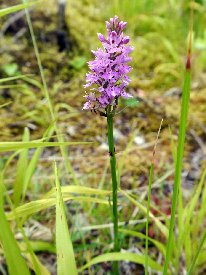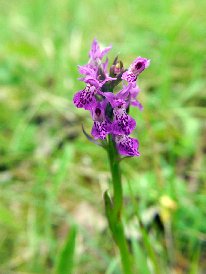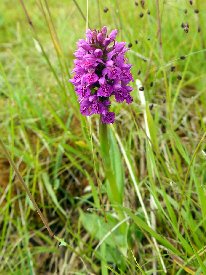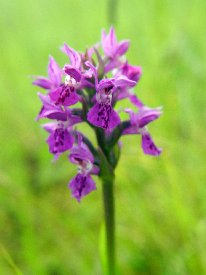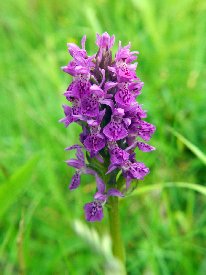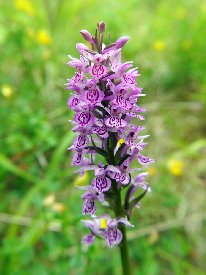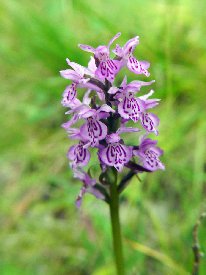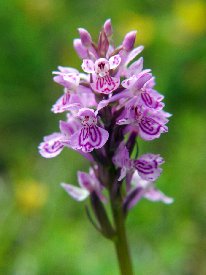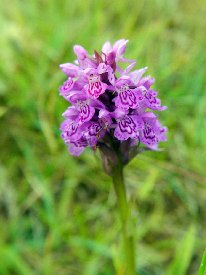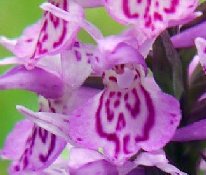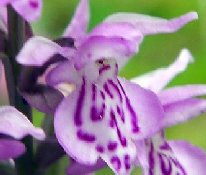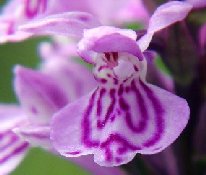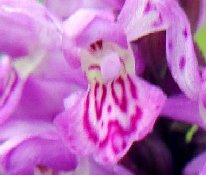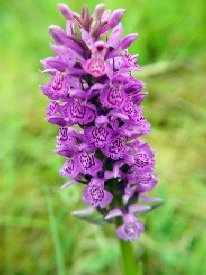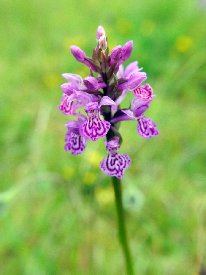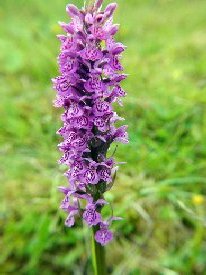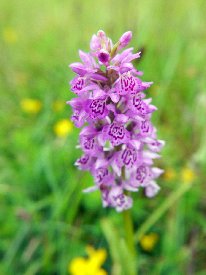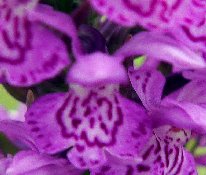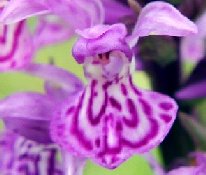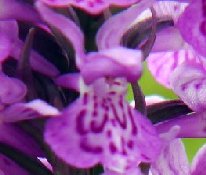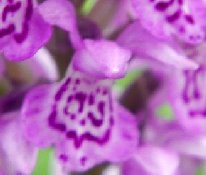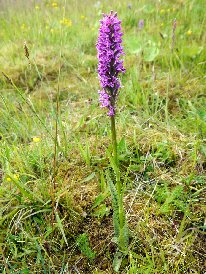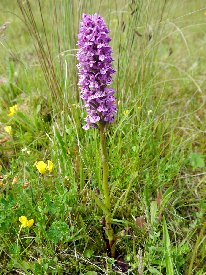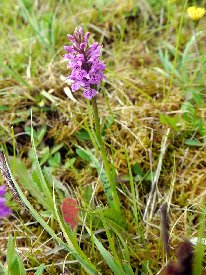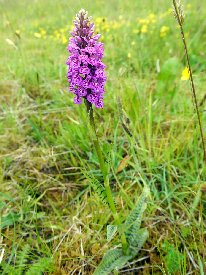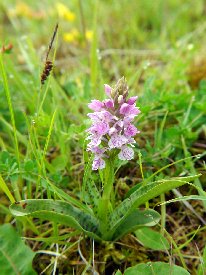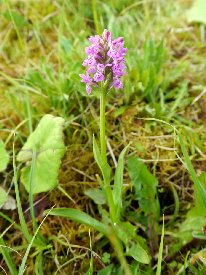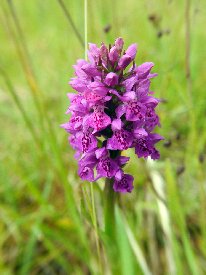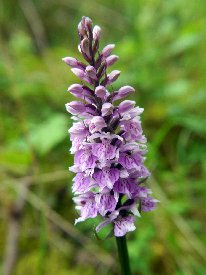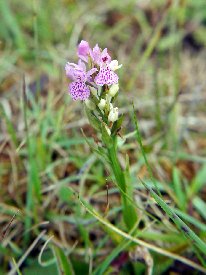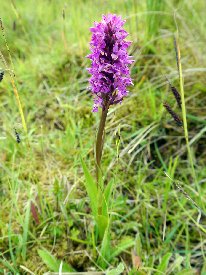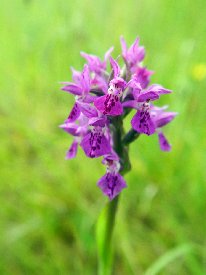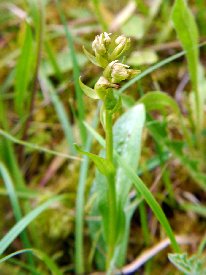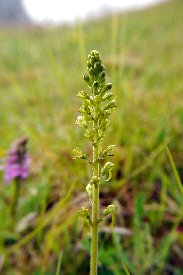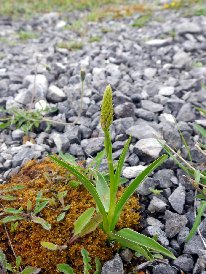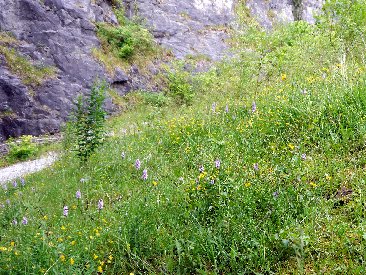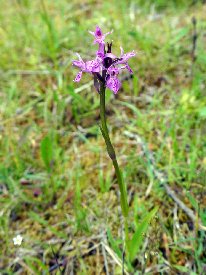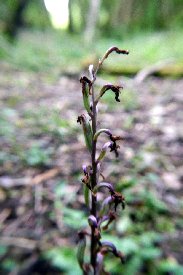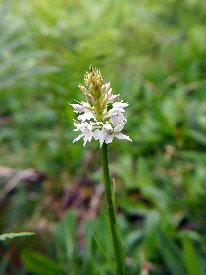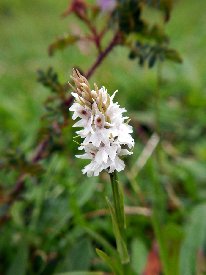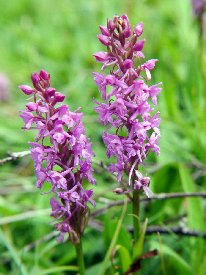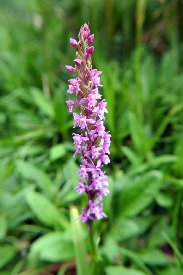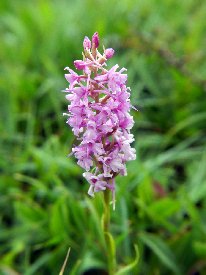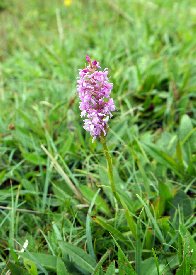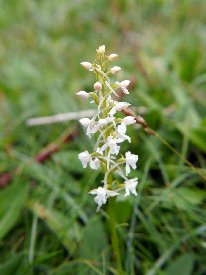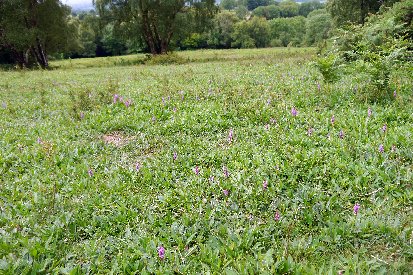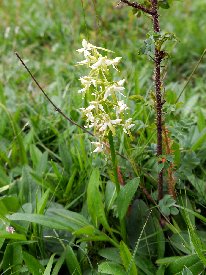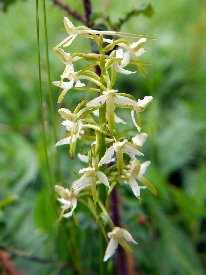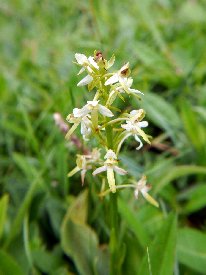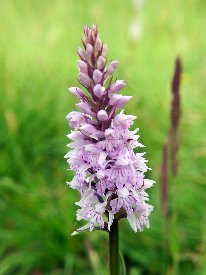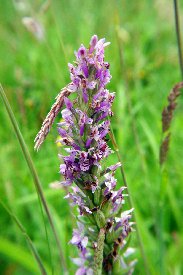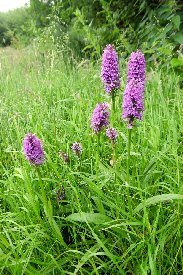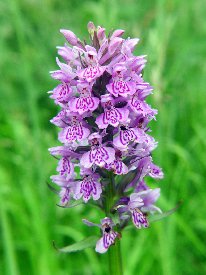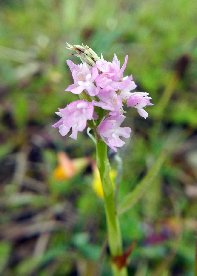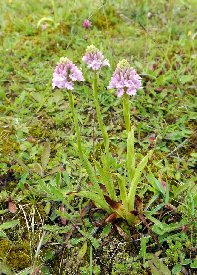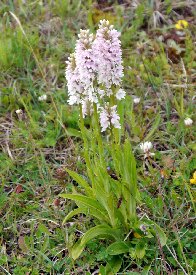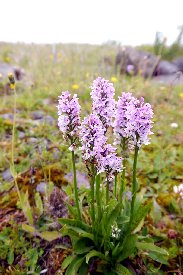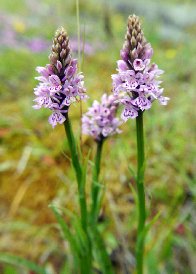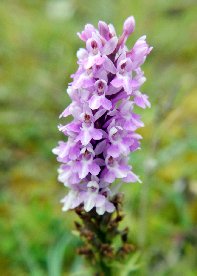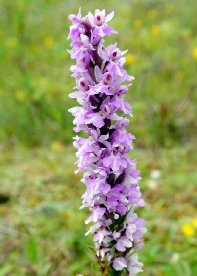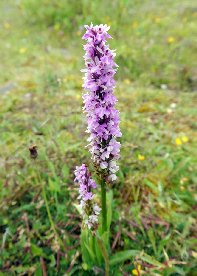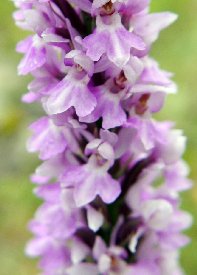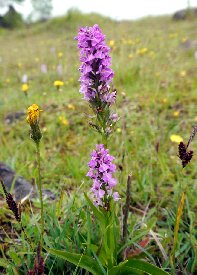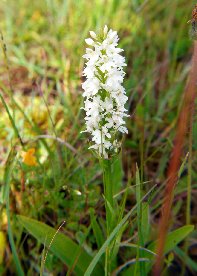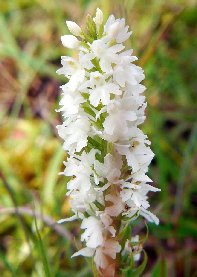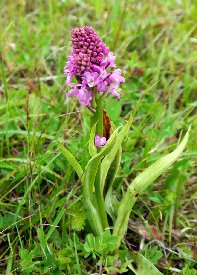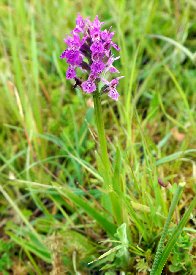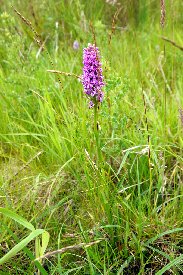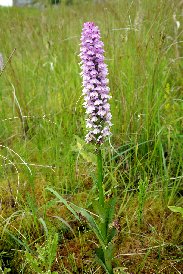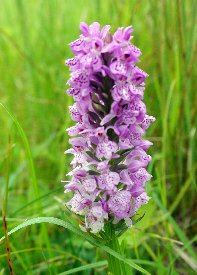|
|
|||||||||||||
|
|
|||||||||||||
 |
|
Minera Quarry, 15th and 23rd June 2020 (SJ 25156 52172) We were here last month for the Early Purple and Frog Orchids. Now it is for the Marsh Orchids. Previously there was no sign of them (apart from a few rosettes if you looked hard enough), and now you cannot miss them. The Common Spotted Orchids are there in abundance, and we didn`t even go into the higher parts beyond the part-time stream. Here are some that caught my eye for one reason or another. It is only later that I notice that the seventh has the possible appearance of Var. rhodochila though the magenta is quite pale. That pigmentation does seem to cover al the lip however. Shame I do not have a better photo, or that the flower wasn`t open properly. I am fairly certain that there were more Northern Marsh Orchids here when I first used to visit, but it is still possible to find some amongst the Spotted orchids. None are particularly impressive specimens Now we come to the rest of the Marsh Orchids growing here - in not inconsiderable numbers. What I see is half or a bit more of them forming a somewhat homogenous group. They have a broad labellum, background colour ranging a from a mid purple shade through to a pale pinkish purple. These are quite heavily marked with bight magenta pink, often in curling continuos lines, with another inside running parallel. The labellum can be said to be three-lobed with the central one being rather small; there may be a sinus between them. The leaves are usually well spotted, and the plants are often of a good size. These examples, and there were many such orchids, were found many in one area of the quarry, and they show remarkable consistency for hybrid origin. However they and others are labeled as D. X venusta, the hybrid of the Common Spotted and Northern Marsh Orchids. If so, I would expect there to be more of a range of forms created when the first hybrids backcross with the parents resulting in a hybrid swarm. And while there are plenty of Common Spotted around, the North Marsh are rather thin on the ground. Perhaps hybridisation with Common Spotteds does keep this species low in numbers, but that can apply to the other oddities found here. Instead I would propose that these are the Welsh Marsh Orchid, officially designated as Dactylorhiza purpurella ssp. cambrensis. Here is the description used in Harrap. For me the real x venusta hybrids are of a much more diverse appearance, with some clearly showing more of the features of one or other of the parents. These may or may not have spotted leaves. Meanwhile it is still possible to find a few more Frog Orchids appearing, see the Common Twayblades properly at last, but the Marsh Fragrant Orchids are just in bud and are harder to spot. One final find was this Dactylorhiza. Others have visited here and found examples that suggest that the Narrow-leaved Marsh Orchid can be found here. This one does fit the bill, but how likely is it? No Schoenus fen, never found before or anywhere nearby. While it is possible for seed to have been carried on the westerly wind from Anglesey (like Dune Helleborines possibly from there populating Alyn Waters) I think it must be a random shuffle of hybrid genes that are producing the traunsteineroides-like plants. Now if anyone can find a small patch of similar rowing together I could well change my mind. This one does resemble the Narrow-leaved Marsh Orchids I have seen at Cors Bodeilio, but I can hardly claim it to be that species.
Y Parc, 20th June 2020 (SJ 17578 70860) This small reserve lies just outside the village of Lixwm in Flintshire via a woodland walk uphill. I had some GRs for the local orchids some years ago, but they only narrowed the location to a square kilometre; in other words too wide an area on the offchance. I needed it to be narrowed down, and finally this year I got the info needed (thanks Chris).
Buckley Common, 22nd June 2030 (SJ272649) This site becomes more of a disappointment each year. Though there were only common Dacts to be seen there, there used to be a bonzer display. But now the roadside patches are virtually orchid free and the area within the common has reduced numbers. The grass has not been cut or grazed and is almost too long for the sturdiest orchids. There are no Northern Marsh Orchids to be seen this year, though they may be well hidden in the grass. There is a patch of Common Spotted Orchidsl; nothing to write home about, and just a few X venusta hybrids. These, unlike some at Minera, must be hybrids, and they do show subtle differences to that population - lip shape and lack of spotted leaves. One Common Spotted looks deformed, by may well have been attacked by slugs. Minera Quarry, 28th and 29th June 2020 Once again we are here, this time on the tip off about a hybrid that just must be seen. Usually here we do not wander off to the further reaches of the quarry, having been distracted by the attractions lower down until we have run out of time or breath. However the second part of the quarry is a massive hole in the ground that looks like it was the final workings there. We have been down to the bottom of that and found no orchids, but never around the top, which is our task this week. Unfortunately the Sunday was really windy and rainy, and though I managed some photos many were blurred and out of focus. Really difficult to photograph in the wind so a return the next day is arranged. Then we come to a particularly rich orchid area overlooking the big hole in the ground. There are many Common Spotted Orchids, with some in small groups formed by vegetative reproduction and good enough in my opinion to be entries in an orchid show, Fragrant Orchids, and more Pyramidal Orchids in the normal and pale shades. This is the place to look for the Common Spotted x Fragrant Orchid hybrid. I am not sure what the official name for this is because x Dactylodenia st-quintinii must be reserved for those hybrids involving the Common Fragrant Orchid as a parent. Anyway we find two good examples. They are not immediately obvious but once recognised the differences with the other orchids there come to the fore. They are more columnar, a gymnodenia trait, than the Dactylorhizas and more purple than pink. There was no scent, but the spurs when the flowers were examined were midway in size between the parent flowers. Also up here we see more Southern Marsh Orchids at the end of their flowering season, and while continuing over the top of the quarry and down the other side there is a pure white D. fuchsii Var. albiflora and an un-resupinate Pyramidal Orchid with a tightly packed inflorescence with the flowers unrotated to their normal orientation - I have not seen either of these at Minera before. Next on the agenda is a part of the quarry where Bee Orchids grow, but somehow we manage two wrong paths and find ourselves at the top of the long grassy slope. The Bees can wait for next year because there is plenty enough to see here. Surprisingly despite being at the top of the slope the ground must be damper. There are plenty of Northern Marsh Orchids, Southern Marsh Orchids, and their Hybrids - x insignis, x grandis and x venusta. I shall be back here in 2021 to have a better look at these, as well as a more determined search for those Bee Orchids |
|
|
||||||||||||||
